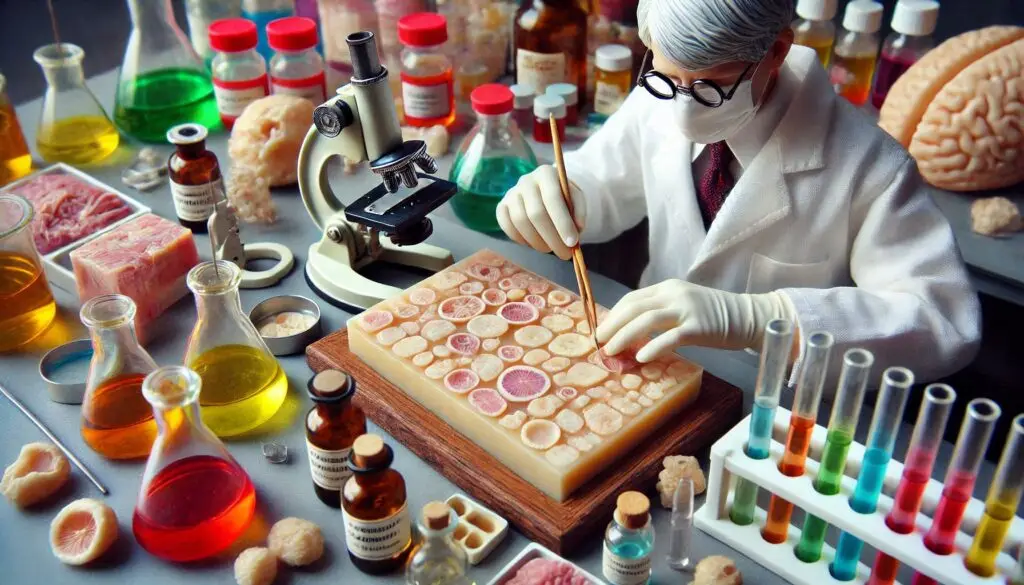Types of Immunity in Animals

Introduction
The immune system is vital for protecting animals from infections. It consists of two main types: innate immunity and adaptive immunity. These defense mechanisms work together to fight harmful pathogens and maintain health.
Innate Immunity: The First Line of Defense
Innate immunity is present at birth and offers immediate protection. It does not target specific pathogens but defends against a broad range of invaders.
Physical and Chemical Barriers
Animals have physical barriers that block pathogens from entering the body. The skin and mucous membranes act as shields. The respiratory tract uses mucus and cilia to trap and expel harmful microbes.
Chemical barriers, such as enzymes in saliva and stomach acid, neutralize pathogens before they cause harm. The Merck Veterinary Manual explains how these barriers prevent infections in animals.
Cellular Defense Mechanisms
Certain white blood cells, called phagocytes, engulf and destroy harmful microorganisms. Macrophages and neutrophils patrol the body and eliminate threats. The American Society for Microbiology provides detailed insights into phagocytosis and immune cells.
Inflammatory Response
When the body detects an infection, it releases signaling molecules that trigger inflammation. This process increases blood flow, allowing immune cells to reach the infection site quickly. Swelling, redness, and heat are common signs of inflammation. Johns Hopkins Medicine explains how inflammation helps in fighting infections.
Adaptive Immunity: A Tailored Defense
Adaptive immunity develops over time and provides long-term protection. It responds specifically to pathogens the body has encountered before.
Humoral Immunity: Antibody Production
B-lymphocytes, or B cells, play a key role in humoral immunity. These cells produce antibodies that neutralize harmful microorganisms. Once the immune system encounters a pathogen, it creates memory cells. These cells enable a faster and stronger response in future infections. The National Institutes of Health details how antibodies protect against diseases.
Cell-Mediated Immunity: T-Lymphocytes at Work
T-lymphocytes, or T cells, attack infected cells and coordinate immune responses. Some T cells directly kill infected cells, while others signal immune responses. This system ensures precise targeting of harmful agents. The Centers for Disease Control and Prevention explains the role of T cells in disease prevention.
Vaccination and Adaptive Immunity
Vaccines expose the immune system to weakened or inactivated pathogens. This exposure allows the body to develop immunity without causing illness. Many veterinary vaccines protect animals from deadly diseases. The World Organisation for Animal Health provides up-to-date information on animal vaccinations.
Interaction Between Innate and Adaptive Immunity
Innate and adaptive immunity work together to protect animals. The innate immune system detects infections first. It then alerts the adaptive immune system to respond more effectively. This collaboration ensures a faster and stronger defense.
Immune Disorders in Animals
Immune dysfunction can lead to serious health problems. Some animals have weakened immune responses, making them prone to infections. Others develop autoimmune diseases where the immune system attacks healthy cells. The Cornell University College of Veterinary Medicine provides extensive research on immune disorders in animals.
Nutritional and Environmental Impact on Immunity
A balanced diet strengthens the immune system. Vitamins and minerals play a crucial role in immune function. Stress, poor nutrition, and environmental toxins weaken immunity. The American Veterinary Medical Association offers guidelines on animal nutrition and immune health.
Conclusion
Understanding the types of immunity in animals helps improve disease prevention and veterinary care. Innate immunity acts as the first barrier, while adaptive immunity provides long-lasting protection. By supporting immune health through proper nutrition, vaccination, and veterinary care, animals can live healthier lives.
More From Animal Diseases:






Responses